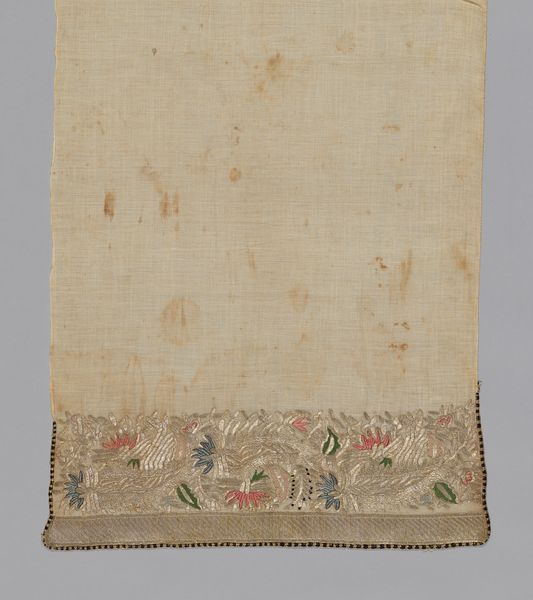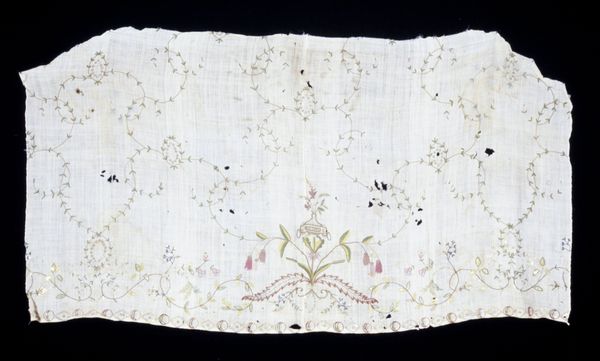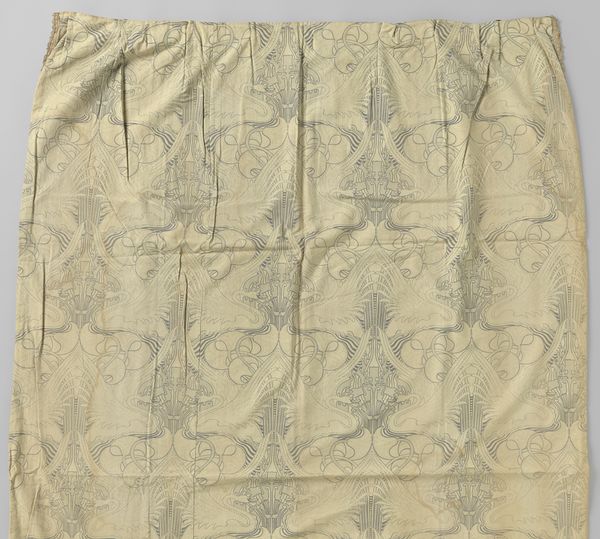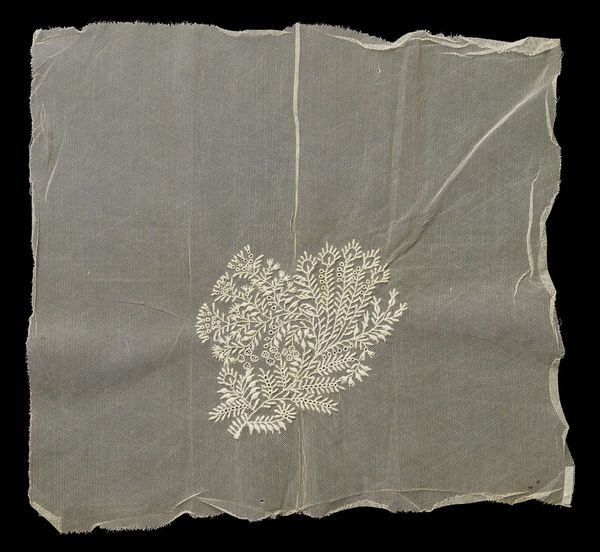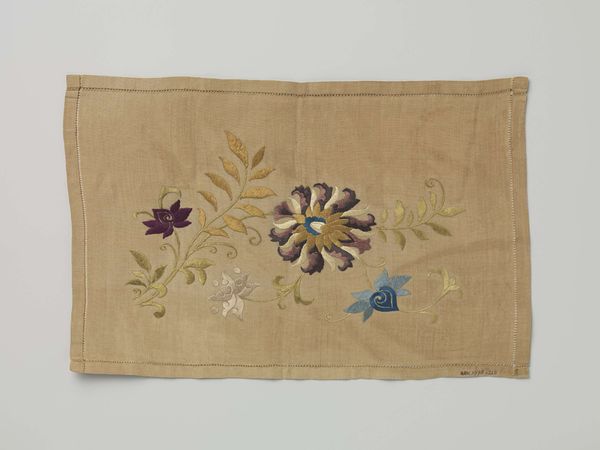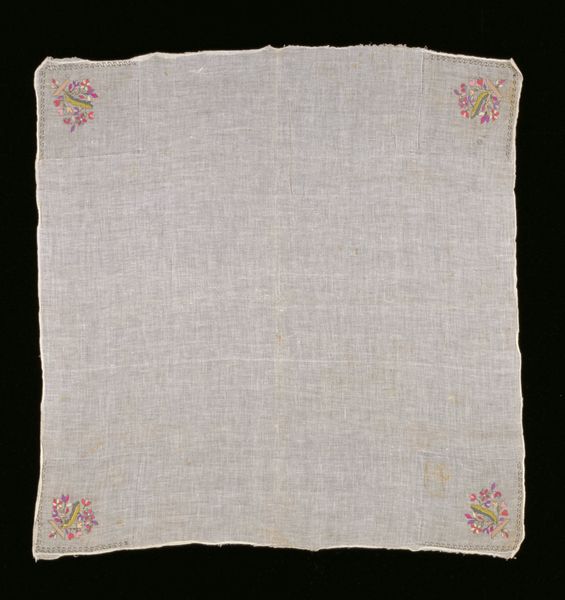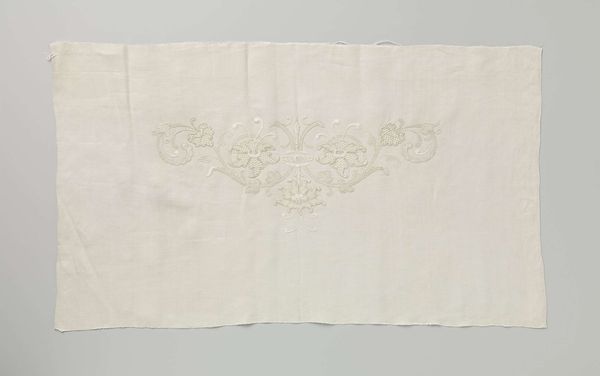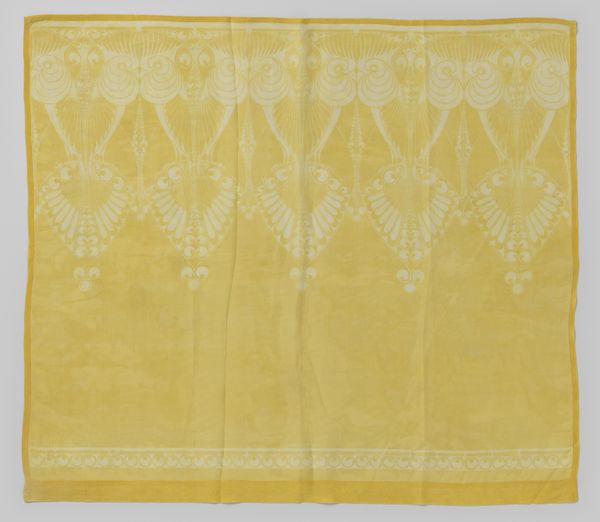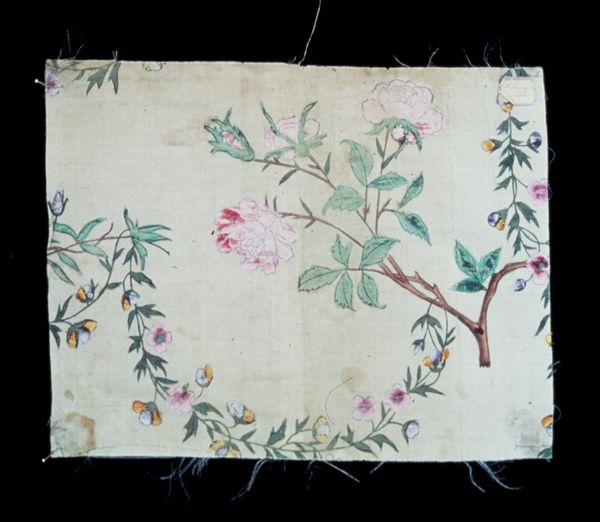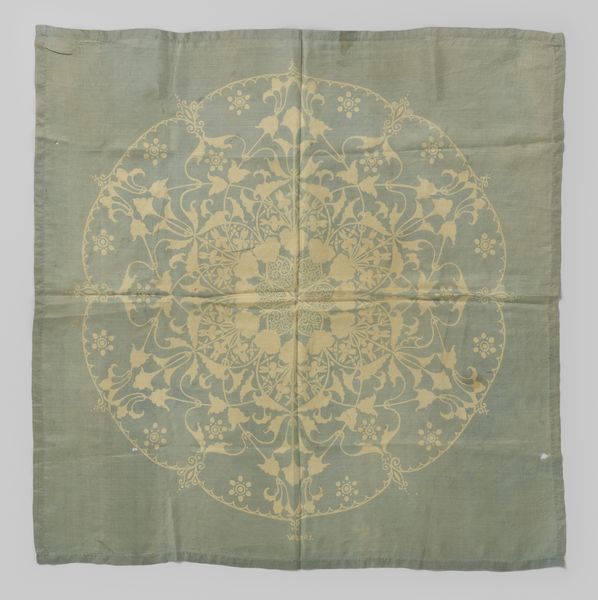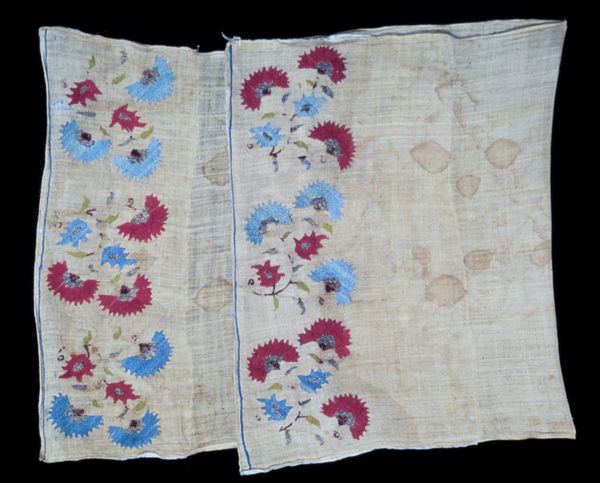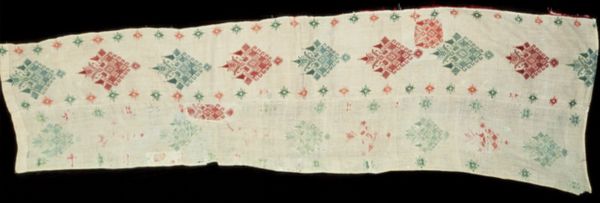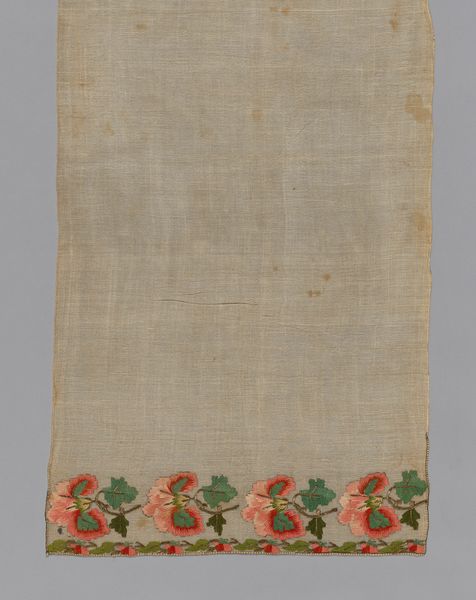
Proeflap van borduurwerk op onafgewerkte moiré-zijde, dat zes kransen en zes slingers van roze en lila rozen vertonen, samengebonden met zilveren strikken c. 1900 - 1915
0:00
0:00
mixed-media, fibre-art, textile
#
mixed-media
#
fibre-art
#
arts-&-crafts-movement
#
textile
#
hand-embroidered
#
embroidery
#
decorative-art
Dimensions: length 42 cm, width 33 cm
Copyright: Rijks Museum: Open Domain
Curator: Welcome. Before us is an exquisite embroidery piece crafted between 1900 and 1915, residing here at the Rijksmuseum. It's described as "Proeflap van borduurwerk op onafgewerkte moiré-zijde, dat zes kransen en zes slingers van roze en lila rozen vertonen, samengebonden met zilveren strikken"—which translates to a sample of embroidery on unfinished moiré silk, depicting six wreaths and six garlands of pink and lilac roses, bound with silver bows. Editor: My initial reaction is its delicate yet somewhat formal quality. The symmetrical arrangement and the pastel hues lend it a serene air, almost like something adorning a bridal trousseau. But there’s also a sense of constraint. Curator: The silk moiré foundation is crucial here. Moiré, with its watery effect, gives a subtle luminosity and texture that complements the delicate embroidery threads. Examining the craftsmanship, you notice the incredibly fine stitching, the way each petal and leaf is carefully formed, suggesting painstaking labour. Consider the working conditions in early 20th-century workshops where textiles like these were produced. Editor: Absolutely, that contrast between the seemingly effortless beauty and the likely arduous labour conditions is compelling. It evokes a whole dialogue surrounding women's work, artistry relegated to "craft," and the economic structures that devalued this sort of meticulous skill. Roses and ribbons, symbols of femininity and romance, but created within a specific, often exploitative, social framework. What about the intended function of this "sample"? Curator: Exactly. As a proeflap—a sample piece—it reveals the textile industry’s demand for precise standards. It likely showcased the embroiderer's proficiency or tested new design variations. In the Arts and Crafts movement, the revival of handicraft was a critique of industrial production. Editor: This moves beyond mere decoration, then, challenging our understanding of labour, gender roles, and the value assigned to different forms of artistic expression. The “unfinished” silk further disrupts established meanings, by making clear this embroidery’s proximity to labour, challenging hierarchical views between ‘high art’ and so called ‘craft’ productions. Curator: Indeed. Seeing the artistry, and feeling the weight of socio-economic implications behind this fragile fragment reveals a complex web of creativity, labour and social constructs. Editor: A deceptively simple piece revealing an elaborate framework.
Comments
No comments
Be the first to comment and join the conversation on the ultimate creative platform.
